
Maserati Levante SUV (2016-2025) engines, drive and performance
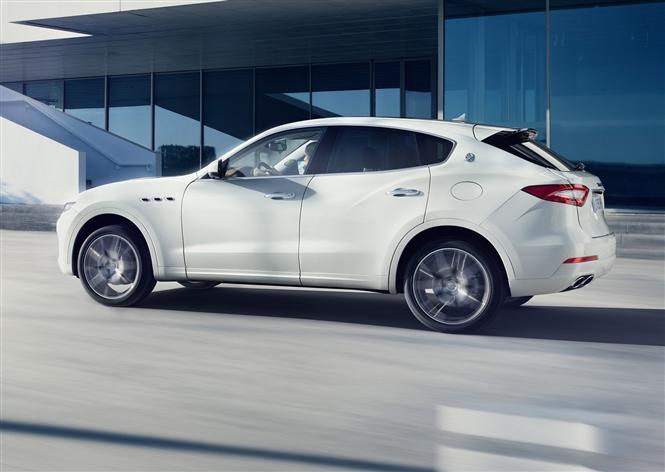
- Choice of two engines as of 2017
- Diesel isn’t half a good as petrol S
- All versions use eight-speed auto
There are two engine options available on the Levante – a diesel and a higher-performance S version with a twin-turbo V6 petrol.
Maserati Levante Diesel
Your sole choice at launch was a 3.0-litre V6 turbodiesel, delivering 275hp at 4,000rpm and 600Nm of torque from 2,000rpm.
This means 0-62mph is achieved in 6.9 seconds and the top speed is 143mph. These performance figures are on the cusp of not quite meriting Maserati status, especially when you lob that diesel thrum into the equation.
Economy is impressive enough with 39.2mpg promised and 189g/km of CO2, although the Levante’s running costs are far from the lowest in class.
There’s an eight-speed automatic transmission with flappy-paddle manual override and intelligent all-wheel drive system with a sporting bias towards rear-wheel drive.
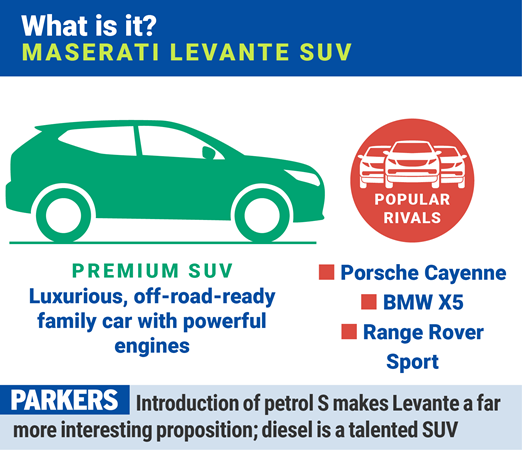
Maserati Levante S
The Ferrari-built 430hp V6 twin-turbo petrol is a far more pleasing proposition; smoother, properly vocal and much more potent – 0-62mph comes in 5.2 seconds and it’ll hit 165mph – this engine makes the Italian firm’s first SUV feel like a proper Maserati.
You’ll have to put up with quite a hit in list price and fuel economy (claimed 39.2mpg for diesel plays 26.4mpg for S), but both are very costly to tax using the latest VED system.
The S comes fitted with the very same eight-speed automatic gearbox and all-wheel drive system as the Diesel.
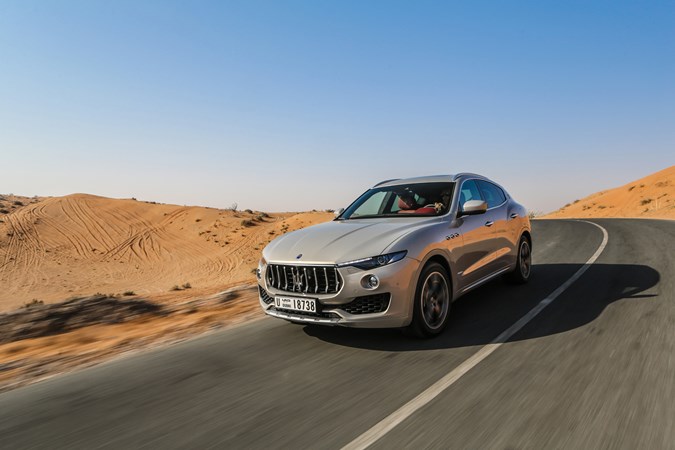
Gearbox
A mechanical self-locking differential and active torque control can split the power from 100 percent rear-wheel drive to 50:50 front and rear.
There are four drive modes to choose from – Normal, Sport, Off-Road and Ice. You need to activate Sport mode to wake up the transmission, which is smooth enough in Normal mode, but gives you time to consider a particularly tricky chess move while your request for a downchange from fourth to third is considered.
Following the 2017 update you had the choice of Aero 1 and 2 (with the car squatting low over its suspension for stable cornering) and Off-road 1 and 2, which raise the ride height (by up to 40mm) for better ground clearance.
- Handling belies Levante’s size
- Adaptive air suspension impresses
- Modes for off-road and fast driving
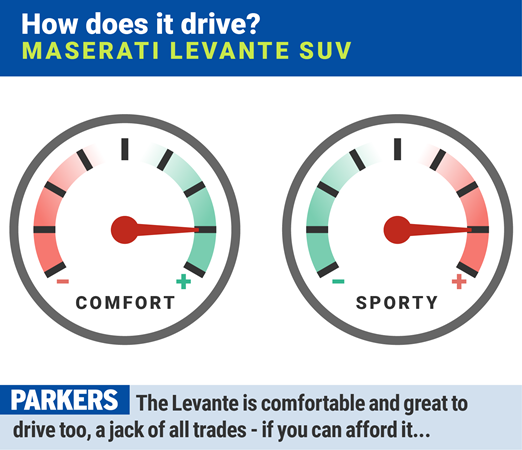
Given that this is a 2.2-tonne car, the Levante’s handling is probably its finest attribute. There’s stacks of grip, and the active suspension makes a respectable fist of controlling body movement and roll through the corners.
Old-fashioned hydraulic steering is accurate if not hugely informative (on pre-2017 models), and decidedly meaty at all speeds, which is appropriate to the nature of the beast when pressing on, but not so great when exploiting the 11.7 metre turning circle at parking speeds.
While the paddle-shift override works well, you can’t separate suspension and transmission in the drive mode settings as you can with some rivals, so an over-firm ride comes free with sharper powertrain responses.
The V6 petrol is a far more engaging drive – it is 100kg lighter than the diesel and it feels as if this weight has all come off the nose. So the steering is perceptibly lighter and the turn-in crisper. It just feels entirely more agile, but perhaps we were seduced by its excellent engine noise.
New steering for 2017
During the minor update in 2017 a new electrically assisted power steering system was introduced across the Levante range to replace the outgoing hydraulic set-up. It’s the very same kit installed on the Ghibli and Quattroporte during their respective updates earlier in the same year.
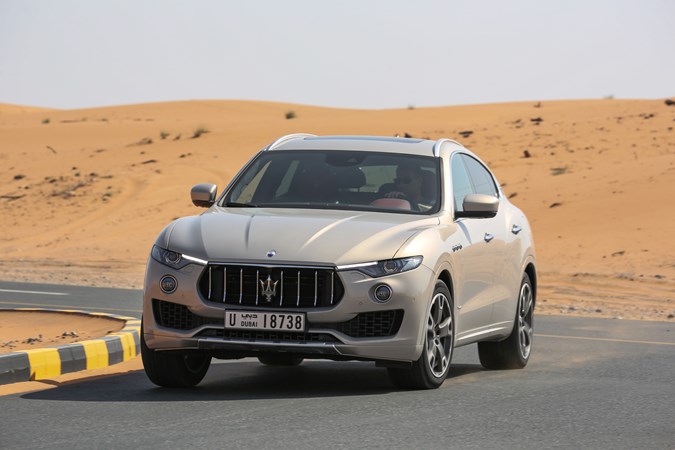
In isolation this is among the best systems of its type that we’ve tried. Maserati has gone to great lengths to instil many of the same qualities that make the old configuration so likeable, meaning it’s sharp, responsive and extremely accurately weighted based on the speed you’re travelling.
The primary reason for its introduction was to allow engineers to fit active lane-keeping tech as part of the driver-assistance upgrades, but it would have been all too easy to remove some of the Levante’s handling talent in the process. This doesn’t appear to have been the case, though, based on an early drive of both petrol and diesel engines on the road and in the desert sands of Dubai.
Off-road in the Maserati Levante
Our testers have had the chance to push the Levante off-road on terrain ranging from extreme desert dunes to soggy UK mud and it didn’t get flustered once.
On sand we set the ride height to its tallest, put the car in its off-road drive mode and let some air out of the tyres for better purchase, but everything else remained standard kit.
Decent approach and departure angles were evident as we traversed steeper gradients, while the predominantly rear-biased all-wheel drive system was fully employed getting torque to each wheel according to its grip level. We found the Levante planted, confidence-inspiring and surprisingly capable when the going got tough.

On mud we were able to test the Levante’s low-friction grip as well as its ability to apply power diagonally across the axles even with a wheel in the air.
It also soaked up big bumps with surprising comfort given the slightly stiff ride experience of on-road, and tackled steep drops with ease using the variable speed hill descent control.


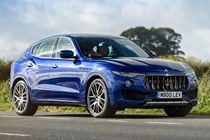

.jpg)
.jpg)
.jpg)
.jpg)
.jpg)
.jpg)
.jpg)
.jpg)
.jpg)
.jpg)
.jpg)

.jpg)
.jpg)
.jpg)
.jpg)
.jpg)
.jpg)
.jpg)
.jpg)
.jpg)
.jpg)
.jpg)


.jpg)
.jpg)
.jpg)
.jpg)
.jpg)
.jpg)
.jpg)
.jpg)
.jpg)
.jpg)
.jpg)
.jpg)
.jpg)


.jpg?quality=50)
.jpg?quality=50)
.jpg?quality=50)
.jpg?quality=50)
.jpg?quality=50)
.jpg?quality=50)
.jpg?quality=50)
.jpg?quality=50)
.jpg?quality=50)
.jpg?quality=50)
.jpg?quality=50)

.jpg?quality=50)
.jpg?quality=50)
.jpg?quality=50)
.jpg?quality=50)
.jpg?quality=50)
.jpg?quality=50)
.jpg?quality=50)
.jpg?quality=50)
.jpg?quality=50)
.jpg?quality=50)
.jpg?quality=50)


.jpg?quality=50)
.jpg?quality=50)
.jpg?quality=50)
.jpg?quality=50)
.jpg?quality=50)
.jpg?quality=50)
.jpg?quality=50)
.jpg?quality=50)
.jpg?quality=50)
.jpg?quality=50)
.jpg?quality=50)
.jpg?quality=50)
.jpg?quality=50)